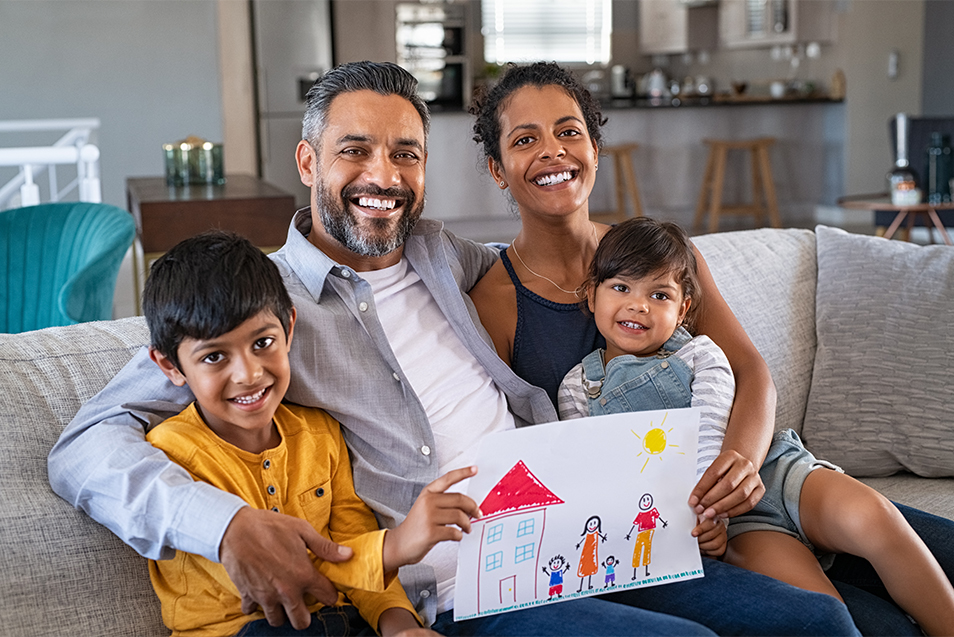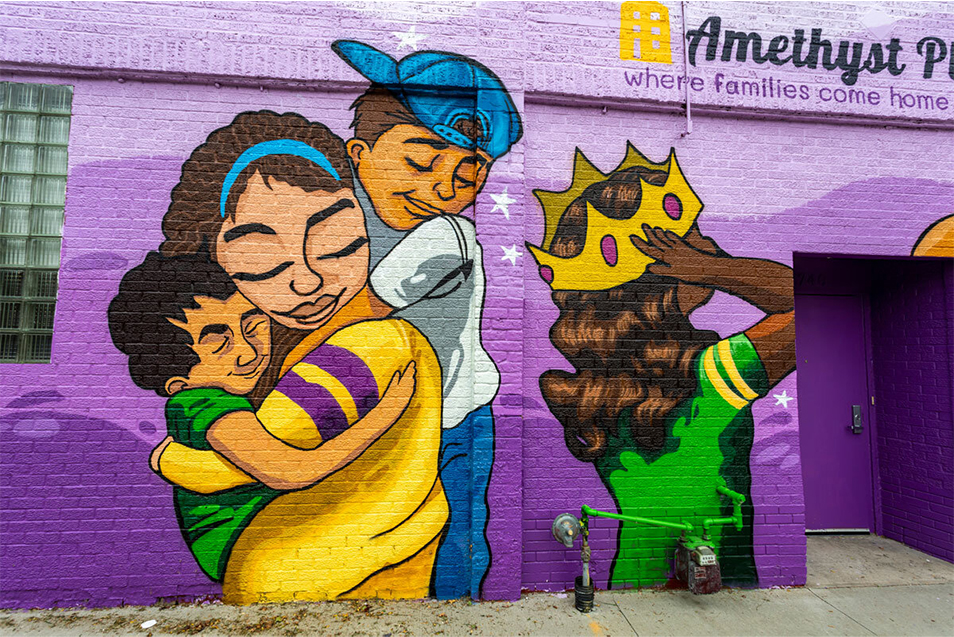Home and Community Based Intervention
Home and community based interventions meet young people and their families where they are through a variety of programs that bring behavioral health and emotional wellbeing supports into family settings, small groups, community and virtual spaces. Keeping flexibility and accessibility in mind, programs aim to help children and families feel comfortable on their own turf, giving service providers a more complete picture kids’ strengths as well as challenges.
Bringing mental health and wellbeing home

Through early intervention, parenting classes, and homeless youth supports, home and community based interventions have unique benefits. Research shows home interventions can help decrease rates of child abuse and neglect, improve academic performance and behavior at school, and boost children’s health.1 Studies of early childhood community interventions can bring a broad-range of long-term benefits, including lower crime rates, higher education attainment and even better earnings as adults.2 Critical to our full impact, these programs have a ripple effect on the wellbeing of the community as a whole.

Explore our current home and community based intervention services partners.
Investing in home and community based intervention services strengthens Jackson County
Help where they need it
Home and community based intervention services break down barriers to care by bringing support to young peoples’ doorsteps and neighborhoods.
Better and Safer Environments
Home and community based interventions are proven to lead to a decrease in child abuse and neglect.
Stronger community
Home and community based interventions not only benefit our kids; they help the adults in their lives, too.
The CSF difference
As a voter-approved, tax-funded program, the CSF works to elevate and “raise the tide” for everyone working to support kids in Jackson County. Investing in home and community based intervention services, our partners, their programs and collaboration for innovation is what’s best for our kids — and our community.
Validating impact
Ensuring effectiveness
Creating community
Learn more about our funding strategy.
Learn more about home and community based intervention services

Safe, Secure, Supported Kids through Home and Community Based Interventions
Learn what home and community based interventions services are and how Children’s Services Fund supports Jackson County kids through local organizations.

Amethyst Place: Where Kids Heal, Feel Safe and Gain Resilience
Transitional housing and therapy at Amethyst Place helps children in Jackson County heal and enjoy childhood while moms recover from substance use.
1 “Are home visiting programs effective in reducing child maltreatment?” Casey Family Programs. 27 September 2022. Accessed 4 May 2023. https://www.casey.org/home-visiting-programs/
2 Reynolds AJ, Temple JA, Ou S, et al. Effects of a School-Based, Early Childhood Intervention on Adult Health and Well-being: A 19-Year Follow-up of Low-Income Families. Arch Pediatr Adolesc Med. 2007;161(8):730–739. doi:10.1001/archpedi.161.8.730. Accessed 4 May 2023. https://jamanetwork.com/journals/jamapediatrics/fullarticle/570882
